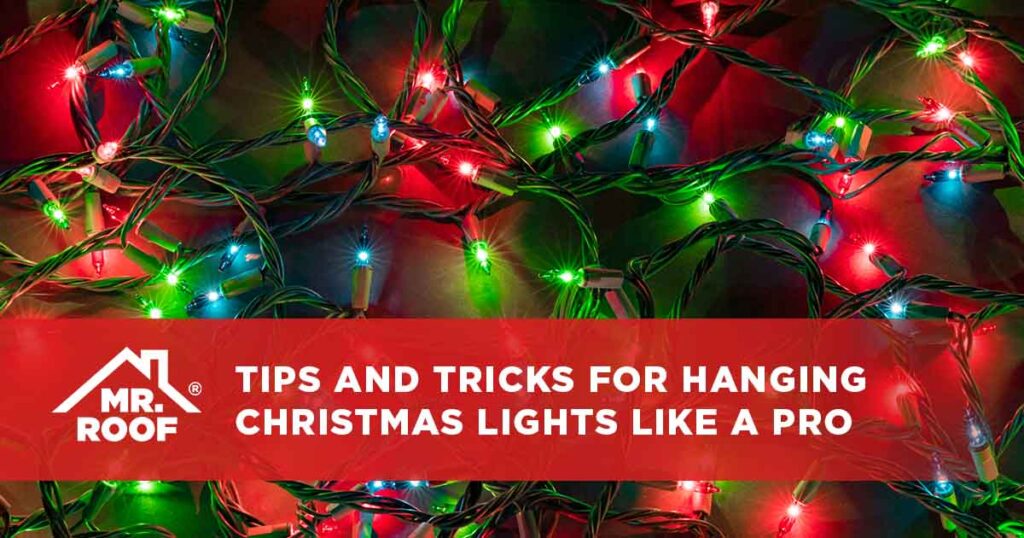To flash a chimney, ensure the step flashing fits snugly against the chimney and goes under the shingles. Flashing a chimney is crucial in preventing water leaks and maintaining the integrity of the roofing system.
It involves sealing the intersection of the roof and chimney to prevent water from entering. The process includes installing step flashing along the sides of the chimney and counter flashing over the step flashing. The materials used for flashing, such as copper or aluminum, play a significant role in ensuring the durability and effectiveness of the flashing.
Additionally, proper installation and attention to detail are essential for avoiding potential water damage and maintaining a watertight seal. Understanding how to flash a chimney is important for homeowners and roofing professionals, as it contributes to the overall protection and longevity of the roof structure.

Credit: www.mrroof.com
Importance Of Proper Chimney Flashing
Proper chimney flashing plays a crucial role in protecting your home from water damage. It serves as a barrier that prevents water from seeping into the roof and causing potential issues such as leaks and structural damage. Ensuring your chimney flashing is installed correctly and maintained is essential for safeguarding your property and preserving its structural integrity.
Role Of Chimney Flashing
- Weather stripping for chimney
- Comprises step flashing, counter flashing, base flashing
- Prevents water entry into the roof
Benefits Of Proper Flashing
- Prevents leaks and water damage
- Preserves structural integrity of the property
- Enhances the longevity of the roof
- Protects against moisture-related issues
It is crucial to understand the importance of proper chimney flashing to maintain a watertight seal and protect your home from costly damages. By ensuring your chimney has adequate and correctly installed flashing, you can safeguard your investment and enjoy a secure and waterproof living space.
Types Of Chimney Flashing Materials
When it comes to flashing a chimney, the choice of materials plays a crucial role in ensuring durability and effectiveness. Various types of chimney flashing materials are available, each with its own set of advantages and considerations. Understanding the characteristics of different flashing materials is essential for making an informed decision when it comes to chimney maintenance and repair.
Copper Flashing
Copper flashing is renowned for its durability, malleability, and attractive appearance. It is a popular choice for chimney flashing due to its ability to withstand harsh weather conditions and its resistance to corrosion. Copper flashing is relatively low maintenance and can provide long-term protection for the chimney structure.
Lead Flashing
Lead flashing is valued for its flexibility and ease of installation. It conforms well to the contours of the chimney and offers excellent waterproofing properties. Lead flashing is known for its resilience and can adapt to temperature changes, making it a reliable option for ensuring a watertight seal around the chimney.
Aluminum Flashing
Aluminum flashing is recognized for its lightweight nature and corrosion resistance. It is suitable for areas with moderate climate conditions and provides an economical choice for chimney flashing. While aluminum flashing may not offer the same longevity as copper or lead, it can still deliver effective protection when installed and maintained properly.
Step-by-step Guide To Flashing A Chimney
Flashing a chimney involves installing step flashing to prevent water leaks. Secure the flashing around the chimney with shingles for a watertight seal. Ensure proper caulking and anchoring for long-lasting protection against the elements. Watch step-by-step tutorials for a DIY approach to chimney flashing.
Gathering Necessary Materials
Before you start flashing your chimney, it’s important to gather all the necessary materials to ensure a successful installation. Here are the items you’ll need:
- Flashing material (preferably copper)
- Roofing nails
- Roofing cement or sealant
- Chimney saddle
- Shingles
- Roofing underlayment
- Hammer
- Chisel
- Tin snips
- Measuring tape
Installing Base Flashing
The base flashing is the first layer of flashing that goes around the base of the chimney and is installed directly on the roof. Follow these steps to install the base flashing:
- Measure the width and height of the chimney base.
- Cut the flashing material to the measured size, ensuring it extends at least 6 inches beyond each side of the chimney.
- Apply roofing cement or sealant to the backside of the flashing.
- Place the flashing against the chimney base, ensuring it overlaps the roof surface.
- Nail the flashing into place using roofing nails.
- Seal any gaps between the flashing and the roof surface with additional roofing cement or sealant.
Fitting Chimney Saddle
The chimney saddle is a triangular piece of flashing that fits around the back of the chimney to divert water away from the base. Here’s how to install the chimney saddle:
- Measure the width and depth of the chimney.
- Cut the chimney saddle material to the measured size, ensuring it covers the entire back of the chimney.
- Fit the chimney saddle around the back of the chimney.
- Place shingles over the flat part of the saddle.
- Nail the shingles and saddle into the roof, ensuring they are secure.
Securing Step Flashing
The step flashing is installed next to the chimney to create a water-tight seal between the chimney and the roof. Here’s how to secure the step flashing:
- Cut L-shaped pieces of step flashing from the flashing material.
- Slide the step flashing under the shingles, ensuring the vertical leg goes up the sides of the chimney.
- Overlap each piece of step flashing by at least 2 inches.
- Nail the step flashing into place using roofing nails.
- Apply roofing cement or sealant over each nail to create a watertight seal.
By following these step-by-step instructions, you’ll be able to effectively flash your chimney, protecting your home from leaks and water damage. Remember to use high-quality materials and take your time to ensure proper installation.

Credit: testlify.com
Common Mistakes To Avoid While Flashing A Chimney
Properly flashing a chimney is crucial to ensure its long-term durability and prevent water damage to your home. However, there are some common mistakes that people make when flashing a chimney that can compromise its effectiveness. In this article, we will discuss these common mistakes and provide you with tips on how to avoid them.
Improper Sealing Techniques
One of the most common mistakes people make when flashing a chimney is using improper sealing techniques. It is important to remember that the primary purpose of flashing is to create a watertight seal around the chimney, preventing water from entering the roof system. Failing to properly seal the flashing can lead to water leaks and damage to the interior of your home.
To avoid this mistake, make sure to use a high-quality and weather-resistant sealant that is specifically designed for chimney flashing. Apply the sealant generously and ensure that it forms a tight bond between the flashing and the chimney. Pay extra attention to any gaps or joints where water may seep through.
Neglecting Counter Flashing
Another common mistake is neglecting counter flashing. Counter flashing is an additional layer of flashing that is installed over the top of the primary flashing to provide an extra layer of protection against water infiltration. Unfortunately, many people overlook the importance of counter flashing, resulting in compromised chimney flashing.
When installing counter flashing, ensure that it is securely anchored to the chimney and overlaps the primary flashing. This will create a barrier that prevents water from seeping between the chimney and the flashing. Neglecting counter flashing can lead to water damage and the need for costly repairs in the future.
Not Tucking Flashing Into Mortar Joints
One of the lesser-known mistakes when flashing a chimney is not properly tucking the flashing into the mortar joints. The mortar joints act as a barrier against water penetration, and if the flashing is not tucked tightly into these joints, it can create gaps where water can seep through.
When installing flashing, ensure that it is snugly tucked into the mortar joints, creating a seamless barrier against water. Pay attention to the condition of the mortar joints and make any necessary repairs or repointing before installing the flashing.
Avoiding these common mistakes will significantly improve the effectiveness of your chimney flashing and protect your home from water damage. Take the time to properly seal the flashing, install counter flashing, and tuck the flashing into the mortar joints. By doing so, you can ensure a watertight seal and extend the lifespan of your chimney.
Signs Your Chimney Flashing Needs Replacement
Detecting Leaks
If you notice water entering your home around the chimney area, especially in the attic insulation or on the ceiling or wall drywall, it’s a clear sign that your chimney flashing may be compromised and in need of replacement.
Damage To Attic Insulation
Water seepage due to faulty chimney flashing can lead to dampness in the attic, causing damage to the insulation. This can result in reduced energy efficiency and may lead to mold and mildew growth.
Visible Deterioration Of Flashing
Inspect your chimney flashing for any visible signs of deterioration such as rust, corrosion, or gaps between the flashing and the chimney structure. These are strong indicators that the flashing needs immediate replacement.

Credit: www.facebook.com
Frequently Asked Questions For How To Flash A Chimney
Should Chimney Flashing Go Over Or Under Shingles?
Chimney flashing should go under shingles to prevent water leakage, using L-shaped copper pieces called step flashing.
What Are The Three Flashing Methods Used On Chimneys?
Chimneys use three flashing methods: step flashing, counter flashing, and base flashing. These components act as weather stripping and protect the chimney. Step flashing goes under the shingles and up the chimney’s sides, while the counter and base flashings cover the top and bottom parts of the chimney.
What Is The Best Flashing For A Chimney?
The best flashing for a chimney is copper flashing. It is durable, looks great, and can easily be shaped. The step flashing, which is the first layer on the sides of the chimney, should be made of lapped copper pieces.
The horizontal leg goes under the shingles, and the vertical leg goes up the sides of the chimney.
What Does It Mean To Reflash A Chimney?
Reflashing a chimney means replacing the chimney flashing to prevent leaks. If there are leaks around the chimney area, damaged or missing flashing is usually the cause, and it should be replaced.
How Do You Properly Flash A Chimney?
To flash a chimney, you need to install step flashing, counter flashing, and base flashing to ensure a watertight seal and prevent leaks.
Conclusion
To ensure a leak-proof chimney, proper flashing is crucial. By following the recommended steps and using high-quality materials, you can prevent water damage and prolong the life of your chimney. With attention to detail and regular maintenance, you can keep your chimney in top condition for years to come.